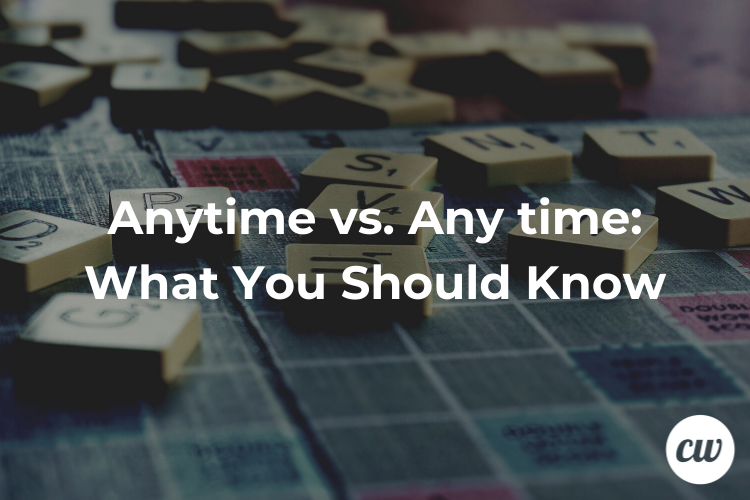
Anytime vs. Any time: What You Should Know
When it comes to grammar, the correct way to use a word or phrase can depend heavily on how it is used. The word “anytime” or “any time” could be correct based on the rest of the sentence.
There is no universal way to use the word. Here is more information about the differences between anytime and any time.
Not Used Interchangeably
The words “any time” and “anytime” are not used interchangeably. The space between the two words changes the meaning of the word. When it is used in speech, the space might be indiscernible to your ear, so you rely on the context of how it is used to understand what it means.
The Meaning of Anytime
Without the space between any and time, anytime means whenever or at any time. It indicates that you are available at any time that the person you are communicating with can talk. It is an adverb that modifies your choice of verb.

Examples of How to Use Anytime
Sometimes it is easier to understand how to use a word when you see it in context. Here are some examples of how to use anytime in a sentence:
- You can email me anytime you want to.
- The TV show is recorded on the DVR, you can watch your favorite show anytime over the next few days.
- He should be here to pick me up anytime now.
- We accept blog posts anytime of the year.
The Meaning of Any Time
With a space between the words, any time becomes a noun phrase. It can also be used as an adverb to modify the sentence’s verb or action. As two words, it means any amount of time.
While anytime is an adverb, too, any time is the only form of the phrase that can be used as an after a prepositional phrase. For instance, I can interview the source at any time tomorrow. Prepositions require objects, which must be nouns. Adverbs cannot be the object of a preposition. Therefore, the sentence “I can interview the source at anytime tomorrow” would be incorrect. If you wanted to use the single word version “anytime”, you would need to remove the preposition first. In this case, the preposition is the word “at.”
Examples of How to Use Any Time
There are many different applications for when it is appropriate to use the two-word phrase “any time” in a sentence. Here are some examples that can help to highlight the differences:
- Do you have any time available today to schedule a Zoom call?
- I don’t have any time to keep up with my laundry working 18 hours a day.
- You never make any time for exercising.

Best Practices
If you are unsure of which version is the correct one to use, it is generally a better idea to use the two-word version. It is more widely applicable and can often work in more types of sentences and uses. This makes defaulting to any time a safer bet. You could also rely on grammar checking tools to get input on correct usage.
Historically, any time was written as two separate words in every context. This practice of using anytime is considered more recent and casual.
If you write an extremely formal document, it might be more appropriate to use the two-word version in all instances. If you write a piece for publication, it could be worth reading through the style guide to see if the publication has a special rule about how to use anytime vs. any time. In some cases, a publication may choose to only use any time as two separate words for consistency across published pieces.
Understanding grammar can sometimes be difficult, especially when two words seem to be used interchangeably in everyday conversations. However, there are circumstances where it is more appropriate to anytime over the noun phrase any time. Knowing when to use the right one can make your writing and speech more grammatically correct and easier to understand.
Melanie G. is a freelance writer and editor living in Tampa, Florida. She’s freelanced full-time since she left her writing job at Nielsen in 2012.




